Abstract
Aim: This study aims to explore the binding interactions between synthesized 3,3’-Disubstituted Oxindoles and the HCK enzyme, with the specific goal of discovering potential anticancer agents.
Background: Cancer presents an ongoing global health challenge, necessitating the exploration of innovative therapeutic approaches. Isatin derivatives and pyridine compounds hold great promise for the development of anticancer drugs due to their wide-ranging biological activities. Moreover, HCK plays a significant role in chemotherapy resistance and reduced drug efficacy in clinical settings, highlighting its importance in the intricate network of cancer pathophysiology. There is an urgent need for targeted interventions to regulate HCK activity and enhance cancer treatment outcomes.
Methods: In our study, we ensured meticulous optimization of protein and ligand preparation to guarantee accurate docking simulations. We conducted molecular docking analyses using the state-of-the-art Glide module and assessed ADME properties using the Schrödinger suite's QikProp tool.
Results: Through molecular docking, compounds 3c and 3e have emerged as promising anticancer agents with low docking scores against Tyrosine Kinase. Further ADME analysis has provided valuable insights into the compounds' in-silico behaviour, while computed dipole moments have enhanced our understanding of their physicochemical characteristics.
Conclusion: In this study, we explored how the synthesized compounds bind within the HCK active site, indicating potential anticancer properties. Through in silico docking, we identified compounds 3c and 3e as possible anticancer agents, with the lowest docking scores of -7.621 and -7.602 kcal/mol against Tyrosine Kinase. These findings emphasize the importance of computational approaches in drug discovery and offer valuable insights for future research and development efforts.
Current Indian Science
Title:Evaluation of 3, 3’-Disubstituted Oxindoles Derivatives as a Potential Anti- Cancer Tyrosine Kinase Inhibitors-Molecular Docking and ADME Studies
Volume: 2
Author(s): Sukhmeet Kaur, Jasneet Kaur, Kirandeep Kaur*, Raghav Mahajan, Jyotisina and Kulwinder Kaur
Affiliation:
- Department of Chemistry, Khalsa College Amritsar, Amritsar, India
Abstract:
Aim: This study aims to explore the binding interactions between synthesized 3,3’-Disubstituted Oxindoles and the HCK enzyme, with the specific goal of discovering potential anticancer agents.
Background: Cancer presents an ongoing global health challenge, necessitating the exploration of innovative therapeutic approaches. Isatin derivatives and pyridine compounds hold great promise for the development of anticancer drugs due to their wide-ranging biological activities. Moreover, HCK plays a significant role in chemotherapy resistance and reduced drug efficacy in clinical settings, highlighting its importance in the intricate network of cancer pathophysiology. There is an urgent need for targeted interventions to regulate HCK activity and enhance cancer treatment outcomes.
Methods: In our study, we ensured meticulous optimization of protein and ligand preparation to guarantee accurate docking simulations. We conducted molecular docking analyses using the state-of-the-art Glide module and assessed ADME properties using the Schrödinger suite's QikProp tool.
Results: Through molecular docking, compounds 3c and 3e have emerged as promising anticancer agents with low docking scores against Tyrosine Kinase. Further ADME analysis has provided valuable insights into the compounds' in-silico behaviour, while computed dipole moments have enhanced our understanding of their physicochemical characteristics.
Conclusion: In this study, we explored how the synthesized compounds bind within the HCK active site, indicating potential anticancer properties. Through in silico docking, we identified compounds 3c and 3e as possible anticancer agents, with the lowest docking scores of -7.621 and -7.602 kcal/mol against Tyrosine Kinase. These findings emphasize the importance of computational approaches in drug discovery and offer valuable insights for future research and development efforts.
Export Options
About this article
Cite this article as:
Kaur Sukhmeet, Kaur Jasneet, Kaur Kirandeep*, Mahajan Raghav, Jyotisina and Kaur Kulwinder, Evaluation of 3, 3’-Disubstituted Oxindoles Derivatives as a Potential Anti- Cancer Tyrosine Kinase Inhibitors-Molecular Docking and ADME Studies, Current Indian Science 2024; 2 : e030724231517 . https://dx.doi.org/10.2174/012210299X310595240626104426
| DOI https://dx.doi.org/10.2174/012210299X310595240626104426 |
Print ISSN 2210-299X |
| Publisher Name Bentham Science Publisher |
Online ISSN 2210-3007 |

- Author Guidelines
- Bentham Author Support Services (BASS)
- Graphical Abstracts
- Fabricating and Stating False Information
- Research Misconduct
- Post Publication Discussions and Corrections
- Publishing Ethics and Rectitude
- Increase Visibility of Your Article
- Archiving Policies
- Peer Review Workflow
- Order Your Article Before Print
- Promote Your Article
- Manuscript Transfer Facility
- Editorial Policies
- Allegations from Whistleblowers
- Announcements


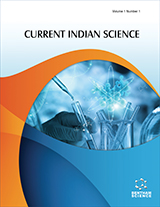







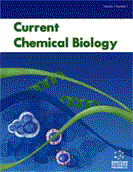
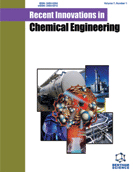

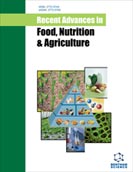


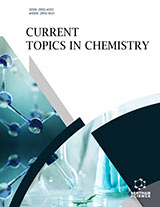

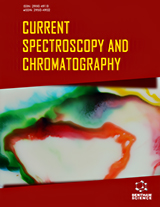
.jpeg)








